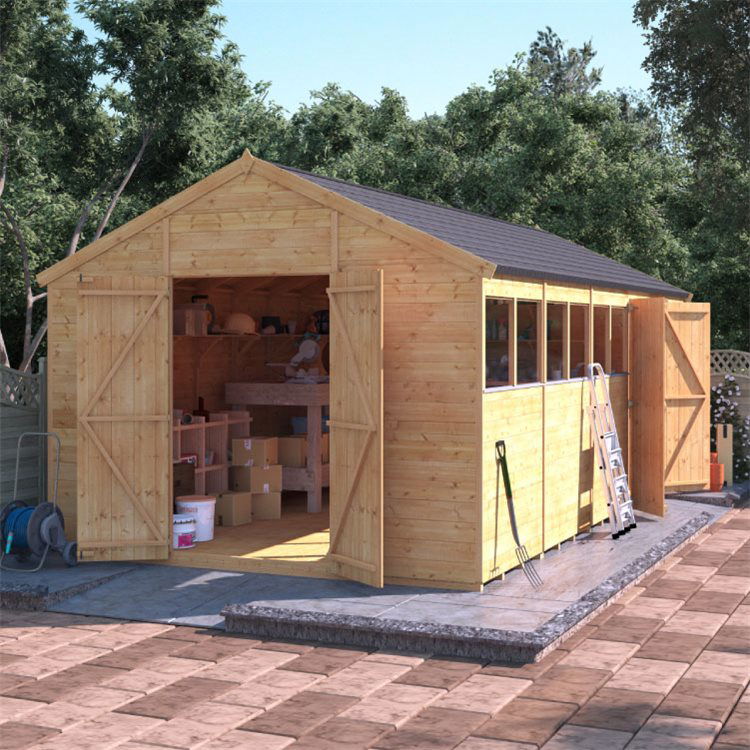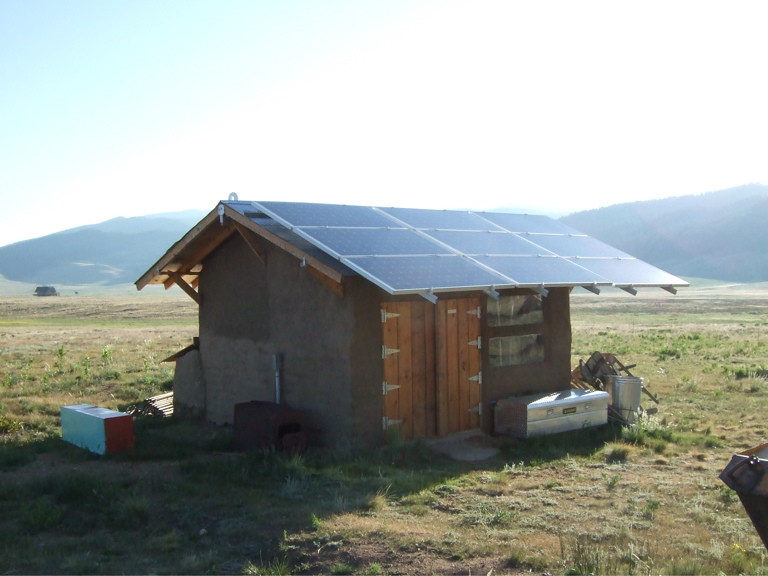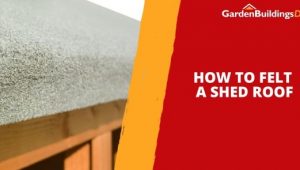Jump to:
Looking to make the leap to solar power? Look no further than your very own garden shed!
Solar panels love to be somewhere that has a great view of the sun. And, chances are, your garden has been designed to get the most sunlight possible. If you’ve got a shed, putting solar panels to soak it all in might be a genius move. In this guide, we’ll walk you through the installation process, plus more information.
Step 1: Set up the shed for the installation

- Build a sturdy support wall within the shed to attach and organise the solar components.
- Create a well-ventilated box on the shed floor to house the batteries. This will ensure proper airflow for heat dissipation.
- Mount the fuse box and charge controller on the support wall, then connect them.
- Install the inverter on the support wall. Connect it to the fuse box and charge the controller to complete the electrical setup.
Step 2: Work on the solar panel connections
- Secure at least two parallel solar panel support rails onto the shed roof. Ensure they’re anchored and weatherproofed to withstand outdoor conditions.
- Create a small opening in the shed’s ceiling for the electrical conduit. Extend it from the support wall to the roof and place the electrical box at the rooftop’s edge.
- Drive a grounding stake into the ground and connect it to the fuse box to create a proper grounding system.
Step 3: Install the solar panels

- Install the solar panels onto the support rails. They should be aligned and oriented to receive maximum sunlight throughout the day.
- Route the wires from the solar panels through the conduit and up to the roof.
- Connect those wires from the panels to the corresponding terminals or connectors. Secure them tightly to ensure reliable connections and optimal performance.
Note: Consider the size of your shed’s roof and ensure it doesn’t exceed its structural capacity. Typically, four to six panels are sufficient to generate power. Once you’ve worked out that, you’ll be on your way to providing your shed with clean, green energy.
Looking to make the leap to solar power? Look no further than your very own garden shed!
If you’re hesitant about adding a full set of panels to your home, then take small steps by adding them to your shed first. This approach is a smart and practical way to embrace solar energy. For one, it offers easier installation routes and potential access to abundant sunlight.
In this guide, we’ll walk you through the entire process. All the information you need to achieve a sustainable solar shed awaits you here, so read on!
How Do Solar Panels Work?

Solar panels consist of photovoltaic cells made from conductive materials such as silicon. When sunlight hits these cells, they generate electricity through a process called the photovoltaic effect. This energy excites electrons within the semiconductor material, creating an electric current. This electricity can then be used to power devices or stored in batteries for later use.
The PV cells perform best when exposed to strong and direct sunlight. They also work even on cloudy days, although their output may be reduced compared to sunny conditions.
The components
Familiarise yourself with the solar panel components and understand their placement. This will help you connect them for a successful setup.
- Battery: The battery bank stores the power produced by the solar panels. Even if you’re using some of the power as it’s generated, excess usually needs to be stored in a deep-cycle battery for later use.
- Charge controller: This device regulates the electrical current from the solar panels. It protects the battery from overcharging or draining completely.
- Inverter: The inverter converts the DC power from the panels into AC power for your shed.
Round-up
Congratulations, you’ve just completed the installation of your solar panel for a shed. Great job!
Solar panels work all year round and provide renewable energy to your home for no fee but the upfront cost. In fact, if you produce excess electricity, the UK Government’s SEG scheme might even pay you to use some of it.
Explore our range by clicking the button below for a high-quality shed that meets all your needs. If you have any further questions, please don’t hesitate to contact us at 01909 768840.
Up next: How To Light Your Shed: Natural vs Artificial Lighting Solutions





